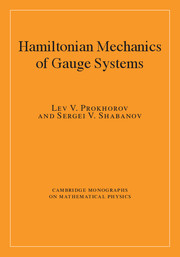2 - Hamiltonian path integrals
Published online by Cambridge University Press: 07 October 2011
Summary
Introduction
Preliminary remarks
The path integral formalism is one of the most important tools in modern theoretical physics. Integration in functional spaces was considered for the first time by Norbert Wiener in his studies of diffusion processes [60, 61]. The corresponding integration measure is now known as the Wiener measure, i.e. the so-called Gaussian path integrals were studied. In quantum mechanics, functional integrals were introduced by R. Feynmann [62, 63] who was inspired by important observations due to P. A. M. Dirac concerning a relation between wave function and classical action [64, 65].
In modern physics the path integral formalism is applied not only to developing a quantum description for systems with infinitely many degrees of freedom as, for example, in quantum field theories or condensed matter physics, but also to ordinary quantum mechanical problems. Moreover there is a tendency to reformulate standard quantum mechanical problems (such as a particle in a “box” or potential well [66, 67], or a particle in the Coulomb field [68]) within the framework of the path integral method. The reason for doing this is rather obvious: physicists develop a new mathematical tool, a new language and, in order to comprehend all of its subtleties, it is necessary to investigate as many concrete examples as possible.
Use of the path integral formalism is widespread in quantum field theory because it is the most adequate mathematical tool for a wide range of problems which allows, not only for elegant formulation of problems, but also for a great deal of simplification of their theoretical analysis.
- Type
- Chapter
- Information
- Hamiltonian Mechanics of Gauge Systems , pp. 68 - 140Publisher: Cambridge University PressPrint publication year: 2011

